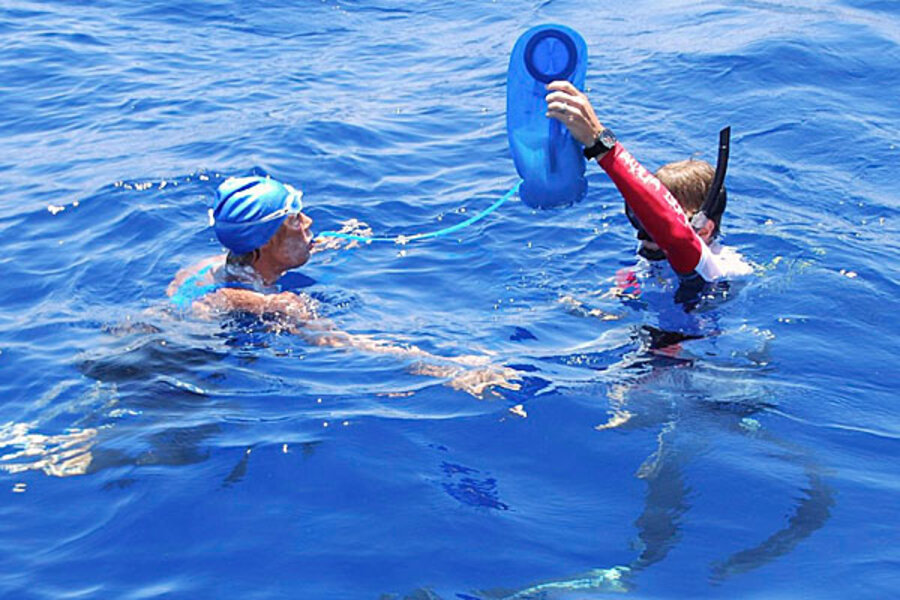Diana Nyad ends Cuba-to-Florida swim short of goal
Loading...
| Key West, Fla.
Her goal of swimming from Cuba to Florida escaped her again, as Diana Nyad was out of the water Tuesday morning unable to complete a fourth day of swimming.
Nyad emerged from the water at 7:42 a.m. A team member, Vanessa Linsley, said the swimmer was battered by a rough night and was finished with her effort to become the first person to swim the 103-mile (166-kilometer) crossing without a shark cage.
"Instead of getting hit with one doozy they got hit with three," Linsley said, "They got hit with the weather, they got hit with the jellyfish and they got hit with the sharks all at the same time."
RECOMMENDED: Eight fascinating swimming facts
Nyad, who turns 63 on Wednesday, was making her third attempt since last summer to become the first person to cross the Florida Straits without a shark cage. She also made a failed try with a cage in 1978.
The overnight hours Tuesday marked the second straight night of storms encountered by the swimmer. On Monday evening, the swimmer's crew was improvising ways to prevent hypothermia and to fend off further swelling of her lips and tongue. Though she's swimming in 85-degree Fahrenheit (29.5-Celsiu) waters, because that is lower than the body's core temperature, it will reduce her body temperature over time. Her team said she had been shivering.
"We all know her mind can handle it," Candace Hogan, a crew member traveling with Nyad, wrote on the swimmer's blog. "But there will always be a point where a human body can't go any farther. What no one knows is where that line is drawn in Diana Nyad."
Australian Susie Maroney successfully swam the Straits in 1997, but she used a shark cage. In June, another Australian, Penny Palfrey, made it 79 miles (127 kilometers) toward Florida without a cage before strong currents forced her to abandon the attempt.
Nyad has already endured jellyfish stings on the current attempt. Stings forced her to cut short her second of two attempts last year as toxins built up in her system.
She has been training for three years for the feat. She is accompanied by a support team in boats, and a kayak-borne apparatus shadowing Nyad helps keep sharks at bay by generating a faint electric field that is not noticeable to humans. A team of handlers is always on alert to dive in and distract any sharks that make it through.
She takes periodic short breaks to rest, hydrate and eat high-energy foods such as peanut butter.
CNN quoted Nyad as saying, before this swim, that she still feels "vital (and) powerful" -- and definitely "not old." A successful swim ideally will inspire people her age and older not to let their age hinder them, Nyad said.
"When I walk up on that shore in Florida, I want millions of those AARP sisters and brothers to look at me and say, 'I'm going to go write that novel I thought it was too late to do. I'm going to go work in Africa on that farm that those people need help at. I'm going to adopt a child. It's not too late, I can still live my dreams,' " she had said.
RECOMMENDED: Eight fascinating swimming facts
___
Follow Matt Sedensky on Twitter at www.twitter.com/sedensky
Copyright 2012 The Associated Press.







